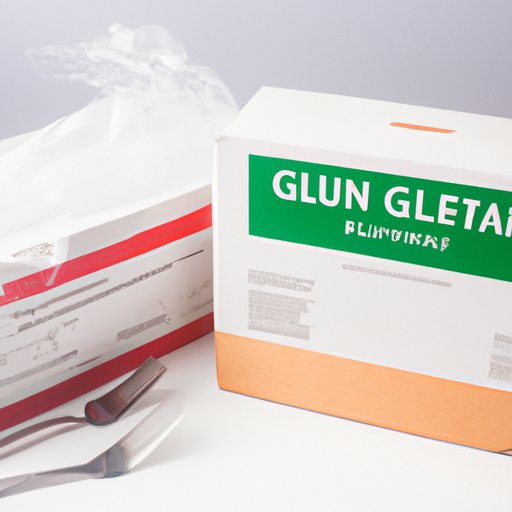
I. Introduction
Gluten-free baking can be a frustrating and challenging experience, with many ingredients off-limits that are otherwise staples in traditional baking. One ingredient often questioned is cream of tartar, with some people raising concerns about its gluten content. In this article, we’ll dive into the truth about cream of tartar and explore its use in gluten-free baking, including tips for substitution and safe use for those with gluten sensitivity.
II. Uncovering the Truth: Is Cream of Tartar Gluten-Free?
Cream of tartar is a white, powdery substance that is a byproduct of wine-making. It is often used in baking recipes as a leavening agent, providing lift and structure to baked goods. But is it gluten-free? The answer is yes – cream of tartar does not contain gluten. It is a pure, natural product that is derived from grapes and does not undergo any manufacturing processes that would introduce gluten contamination.
III. Gluten-Free Baking Tips: Understanding Cream of Tartar
Cream of tartar is an acidic ingredient, and it reacts with alkaline ingredients like baking soda to create carbon dioxide gas, which causes batters and doughs to rise. It is often used in recipes that require a delicate, fluffy texture, such as meringues and angel food cake. When using cream of tartar in gluten-free baking, it is important to understand its role and how it interacts with other ingredients in the recipe.
IV. Is Cream of Tartar Safe for Those with Gluten Sensitivity?
People with gluten sensitivity or celiac disease may be hesitant to use cream of tartar, even though it is gluten-free. This is because some cream of tartar products may be processed in facilities that also handle gluten-containing ingredients. This could lead to cross-contamination, which could trigger a reaction in people with severe gluten sensitivity. It is essential to read product labels carefully, and if in doubt, to contact the manufacturer to inquire about their gluten-free protocols.
V. Going Gluten-Free: Using Cream of Tartar in Your Recipes
If you’re new to gluten-free baking, incorporating cream of tartar into your recipes can seem intimidating. But with a few simple tips, it’s easy to use and can yield excellent results. When making meringues or angel food cakes, use a clean, dry bowl and whisk, as any residual oil or moisture can hinder the fluffy texture. In recipes that call for cream of tartar and baking soda, make sure to add these ingredients separately and to mix them thoroughly together before adding them to the batter or dough.
VI. Cream of Tartar and Gluten: What You Need to Know
The key takeaway from this article is that cream of tartar is, in fact, gluten-free and safe for those with gluten sensitivity when sourced from a trusted manufacturer. That being said, it’s important to remain vigilant and always read product labels and ingredient listings carefully. If you’re still unsure about using cream of tartar in your gluten-free baking, consider seeking advice from a qualified medical professional or dietitian.
VII. The Ultimate Guide to Cream of Tartar for Gluten-Free Baking
Looking for even more tips and advice on using cream of tartar in your gluten-free baking? Check out our comprehensive guide, which includes everything from frequently asked questions to recipes and substitution tips for cream of tartar.
VIII. Gluten-Free Cooking Hacks: How to Use Cream of Tartar
In addition to its use in baking, cream of tartar has several other culinary applications. For example, it can be used to stabilize whipped cream or to create a tangy, acidic flavor in marinades and dressings. Experiment with adding a pinch of cream of tartar to your morning smoothie or to your favorite guacamole recipe for an extra boost of flavor.
IX. Conclusion
Cream of tartar is a staple ingredient in many traditional baking recipes, and the good news is that it is gluten-free. While there may be concerns about cross-contamination in certain products, careful labeling and sourcing can mitigate these risks. For those with gluten sensitivity, it can be a valuable tool in gluten-free baking, providing lift and structure to delicate recipes.




